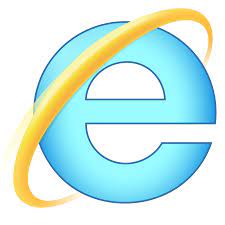Internet Explorer 9 Beta
 Have you already gotten used to Internet Explorer 8? Well, maybe it is time to check out the next version of Internet Explorer, IE9. Although not officially released yet, Microsoft has a beta version available for download that you can install. You’ll need Vista or Windows 7 to run it though, as IE9 uses DirectX 10.
Have you already gotten used to Internet Explorer 8? Well, maybe it is time to check out the next version of Internet Explorer, IE9. Although not officially released yet, Microsoft has a beta version available for download that you can install. You’ll need Vista or Windows 7 to run it though, as IE9 uses DirectX 10.
With the mounting pressure from competing browsers, and Google Chrome and Firefox growing in popularity, Microsoft is of course keen to make sure their Internet Explorer remains a competitive product. And with the mandatory browser selection during Windows installation, users get more aware of the choice. In deciding which browser to use, compatibility and performance have always been key factors for many users, although user-friendliness also plays a role.
One of the main concerns I always had with the new Internet Explorer versions was the increased number of security and control functions, as well as all the user-monitoring and suggestions. Sure we want to browse the web safely, and protect our children from the wrong exposure, but where does the browser stop and where does the security software start? (Think firewall and anti-virus software.) There seems to be a lot of overlap. And I can’t help but feel there is a performance loss in that.
Internet Explorer 9 Changes
When you download and install the IE9 beta, the first thing you will see is that it uses the full screen. With the exception of the address bar and the Windows Taskbar, IE9 uses the full screen. The Alt key still brings up the menu bar if you need to access the menus.
But the main changes to IE9 are actually on the backend since Microsoft incorporated a new JavaScript engine (Chakra). This greatly improves performance, especially on new systems with multi-core processors.
Further aiding to the performance improvements in Internet Explorer 9 is the implementation of the HTML5 canvas, a concept that uses DirectX only and no more GDI for graphics rendering. This way, IE9 can take full advantage of the hardware acceleration that modern GPUs (Graphical Processing Unit) offer.
Other improvements in Internet Explorer 9 are the extended support of HTML5 and the better CSS3 support. This will particularly benefit website developers, as the new standards are better supported in all browsers. No more coding to cater to specific browser quirks, and websites will look the same in different browsers.
Whether end-users will like Internet Explorer 9 the same way as Google Chrome, I don’t know, but Microsoft is well on its way to making Internet Explorer a real choice rather than just a default browser as it used to be. Try out the IE9 beta for yourself to make up your mind by testing your favorite websites.
Update January 2011: by now more than 20 million people have downloaded Internet Explorer 9. The next update will be Internet Explorer 9 RC (Release Candidate), which is expected by the end of this month.


Thank you. It works.
@Fritz Liessling - Thank you for your feedback. I understand that you are looking for other resolutions, but within Windows…
Although the answer to this question is correct, it is really a cop-out answer. It's easy enough to find answers…
To the pcauthorities.com administrator, You always provide useful links and resources.
???? ?? ??? The Last of us